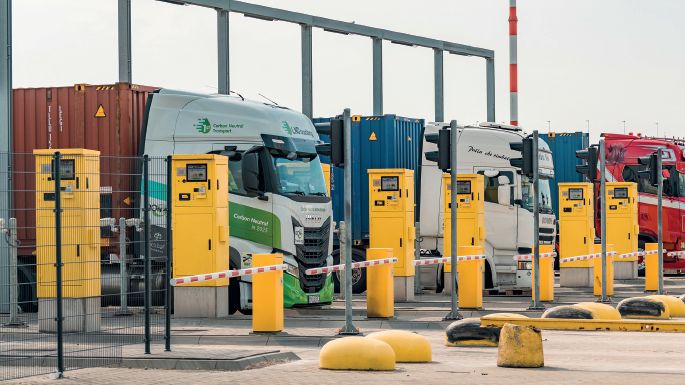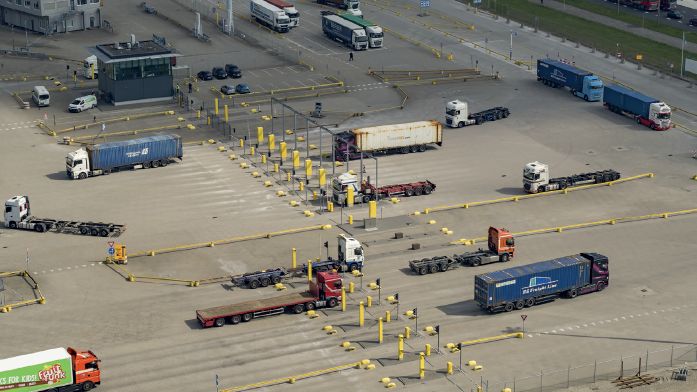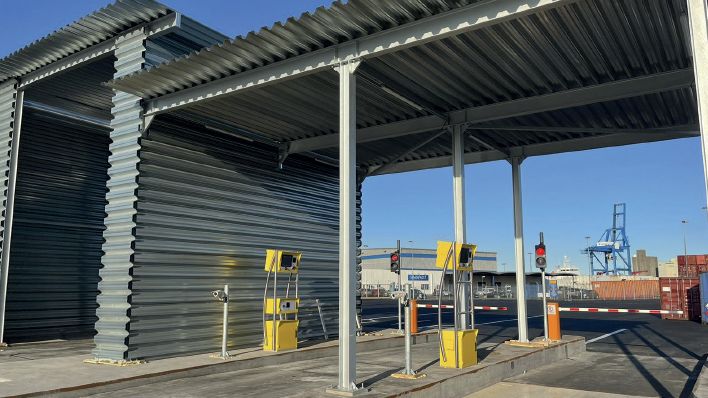OCR on an empty handler – this is why
NewsCERTUS’ major US customer reports that the first five empty handlers with OCR exceeded expectations, leading to an additional 28 being equipped.
Gate OCR, exception handling, and TOS systems are now part of daily practice in most terminals and gradually also at logistics sites. This has brought a new way of working to the industry, as CERTUS Port Automation has found out.

Before the arrival of gate automation, at a nonautomated gate there used to be gate clerks in every lane of the terminal, working between moving trucks and polluting gases. With the advent of automation, the gate clerk is now a single person that handles exceptions. Truckers scan their card or key in a booking number when they enter, and the system tells them where to go. Only in the case of an exception is the gate clerk required to act.
Chris Scheepers, project manager at CERTUS Port Automation, works closely with terminals and logistics sites that want to automate their processes.
“Sometimes this is an upgrade, and sometimes this is the first automation a company is going for,” he says. “Most of the companies already know more or less what they want and how they want to achieve it. They have thought this through. The details are discussed together: where should the entry be and where the exit, should there be a printer or paperless communication, do they want number plate recognition, and an OCR system with high-quality images for insurance purposes? Based on such questions we build a design,” says Scheepers.
“This is the civil and hardware design, after that comes the software design. The software design will follow from the functional design, which is created from the customer’s functional requirements. Also, the required interfacing to other systems needs to be defined. What software is already in use? Is there a TOS system in place? Does the customer use a vehicle booking or appointment system? The gate operating system will be connected to these systems and the interface messages will need to be agreed. After these details have been worked out, everyone will get to work, preparing for the ‘go live’.”
The first days of operation, as with every change, are challenging, says City Terminal Cooperation (CTC). Located at the port of Rotterdam, this is a collaboration between the companies housed at this site (RSC, RST, Matrans Rotterdam Terminal and Kramer Group). In 2017, the group of companies decided to transition to one AutoGate that supports multiple sites.

“Our staff were prepared with training given internally with the help of our suppliers. Of course, it takes some time to get used to going from a full manual process towards exception handling via video and intercom, but we managed to make it into a mutual success for us and our customers,” says Jeroen Zwijnenburg, chief commercial officer of Rotterdam Short Sea Terminals (RST), one of the CTC partners.
Guðmundur Ágúst Aðalsteinsson, senior manager at Eimskip Iceland also had the experience that preparing the staff for AutoGate takes time.
“We started to prepare with process work and current state analysis. We found that many of our processes would not work in the new environment. We did a lot of work on this. We did a rather short training on the system because the CERTUS system is not so complicated to work with,” says Aðalsteinsson.
Eimskip Iceland in the port of Reykjavik implemented gate automation as well as Crane OCR in 2023.
At both terminals, the successes are evident. At CTC, truck turnaround time was reduced by 30-45% to 30 to 45 minutes. This is significant, as the landside operation for trucks is the second most important operation for CTC after vessel operations.
“The main reason for us to automate gate operations was to reduce the gate-related cost, reduce truck dwell times and eliminate the factor of human failure in the process.”
A nice bonus for CTC was that automating the gate significantly reduced the gate footprint. As a result, space in the huge truck parking lot became available for operations.
Change isn’t always easy, admits Zwijnenburg. “For truck drivers it is always easier and more fun to talk to somebody face to face. Also, language barriers can increase when there is little face-to-face contact. But these disadvantages do not outweigh the benefits. In the long term, everybody sees the benefits of having an active digital line of contact with the terminal, which is constantly updating a planned visit status. On top of that, spending less time at the terminal is a big mutual benefit. Truck drivers often needed to wait because information was incorrect or missing.”
Terminal staff need to incorporate these changes as well. The way that personnel is positioned changes, new functions arise and some disappear. What used to be done by five people can now be done by one person, explains Scheepers.

“We went from a 20-plus FTE count at a 24/7 manual gate operation to an approximately 7-FTE count at a 24/7 exception handling team,” says Zwijnenburg. “We mainly eliminated functions in relation to the manual handling of gate related information and driver processing. In the same period, we automated our customs process and all gate related communication was transferred into electronic data interchange (EDI). The automation and preannouncement are now a firm obligation to plan your truck visit to our terminal.
“Unfortunately, we had to let go some staff, which is of course never a goal in itself,” Zwijnenburg continues. “But based on this change we were able to shift from a 16/7 data team and a 24/7 gate team to one data team which now operates 24/7 for all gate and data related customer service. This also created new opportunities for the current team as well.”
Eimskip Iceland did not create any new positions, but the system allowed for interchange personnel between gate clerks and hatch clerks. “The same was true for the IT systems and the IoT. Our team did very well and welcomed the new technology. This helped us to move forward,” Aðalsteinsson says.
“In general, staff are happy with the changes,” says Scheepers. “They find out that their job has become easier. They do not need to go outside in harsh weather conditions, but can do the same job in a warm office with a cup of coffee, for example. They are more comfortable in their job. “As with every change, it takes a little while before they get used to this new way of working,” he concludes. After the ‘go live’ we always stay with the company in the first weeks. On the first day, you get a question sixty times, on the second day thirty times and after a week there are no questions.”
Zwijnenburg agrees: “The software is easy to use and constantly improving. We need to constantly manage this change internally and although this is not always easy for our managers it is an unstoppable force from our perspective.”